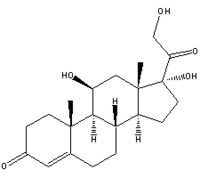Q: I've been reading about the harmful effects of cortisol, particularly that it can break down muscle protein. What can I do to control its levels in my body?
A: Cortisol is a double-edged sword. Exercise is just one of the physical and psychological stressors that induces its release, yet this so-called stress hormone hampers your ability to recover and grow. "The key with cortisol is not to avoid it but to encourage your body to produce less of it and to take steps to help push through the catabolic phase associated with cortisol release," says Steve O'Reilly, RD, LD, CEO of Underdog Nutrition. He offers the following suggestions to help you minimize the exercise-induced effects of cortisol on your hard-earned physique.
* Avoid excessive training. Once you tax your target muscles fully within a workout, you don't stimulate additional muscle growth by continuing to pound your body--you only create more damage and increase cortisol release, O'Reilly warns. Follow these exercise guidelines: In general, weight train for no longer than 60 minutes per session. Reduce your rest time to increase the number of sets you perform. Do cardio for 30-45 minutes at a moderate intensity (intense cardio encourages the release of cortisol). Finally, cool down with yoga stretches, which have been shown to lower cortisol levels, and get adequate rest before training the same bodypart again.
* Try cortisol blockers. "Supplements such as phosphatidylserine (PS) can be effective at helping to reduce the effects of cortisol," O'Reilly advises. "PS helps drive nutrients into and remove toxins from your cells, ultimately having the effect of reducing stress-induced cell damage." Take 400-600 mg twice a day, before both exercise and bedtime.
* Adjust your diet. "What you eat can have a dramatic impact on cortisol levels," says O'Reilly. He recommends fueling your muscles before, during and after your weight training. "If you have protein and carbs in your system, then you've significantly reduced the potential for cortisol to wreak havoc on your lean tissue." For best results, make a shake with 40 grams of whey protein and 60 grams of dextrose (a form of sugar). Drink half before your workout, then add water to the remainder and sip the diluted version as you train. After your training session, take in another 40 grams of whey and 40-60 grams of dextrose. Feel free to add creatine (5 grams), arginine (5 grams) and glutamine (5-10 grams) to both your pre- and post-workout shakes.
Follow these three simple rules on a regular basis, and you may be surprised by how much better your body responds to your training and diet--and how much better you feel keeping cortisol levels in check.
COPYRIGHT 2005 Weider Publications
COPYRIGHT 2005 Gale Group



